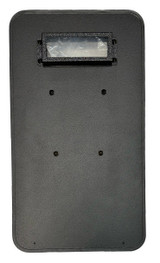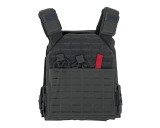Choosing a machete - Battle Steel®️
Choosing a machete
There is a reason why the machete is the tool of choice for survival situations. Its wide-tipped shape and heavy upper blade make it incredibly versatile, suitable for clearing thick brush, excavating roots, hammering nails, chopping through hard materials like logs or bamboo – and of course, as a weapon if the need arises.
In today’s market there are a huge variety of machetes available, and a simple Google search reveals hundreds of different kinds priced anywhere from $10 to $100+. It is not always easy for the buyer to decide which machete is best for them, so in this article we will detail the different kinds of machetes, outline which factors you should take into consideration, and help you to narrow down your options.
What to consider when buying a machete
Purpose
To start with, you must know your purpose for purchasing a machete. The majority of customers want to buy a machete as part of their emergency bag, and so are looking for a model which suits survival and agricultural tasks – chopping down trees, clearing trails, butchering meat, scaring off predators etc... On the market you will find different types of machete which are well suited to specific tasks, but in emergency situations where you will be on the move, you’ll need one model which is portable and multi-purpose.
Price
You don’t have to break the bank on a bespoke, handcrafted machete. Good quality mass-produced machetes are certainly available, just don’t opt for the cheapest – after all, this is your survival we’re talking about. As with many mass-produced products, cheap materials and manufacturing shortcuts can mean a lower quality product. The best-selling models are priced between $20-$40 including a sheath, and at such reasonable prices there is no need to settle for a $5 machete whose blade will quickly weaken and blunt. Equally, don’t choose the model that looks like a cool video-game weapon – this is real life.
You shouldn’t scrimp on safety, and if cost is not an issue then we recommend that you look at models selling for $70 or above. Premium machetes are long-lasting, hard enough to chop small logs, have rubber or leather handles for a more comfortable and secure fit, and often have a knuckle guard to protect your hand. As with everything, you get what you pay for.
Maintenance
Most machetes are made from high carbon steel or stainless steel, each with their advantages and disadvantages.
High carbon steel is harder than stainless steel, making it better suited for working and survival purposes. Thanks to its hardness carbon steel retains its sharpness for longer, however it is harder to resharpen when it dulls. Although stainless steel blunts quicker, its advantage is its rust resistance, whereas carbon steel stains more easily when exposed to air and moisture. Nevertheless, do not make the mistake of thinking that stainless steel is rust-proof; it certainly holds up better in a damp environment and requires less maintenance, but should be wiped down after every use just like a high carbon machete. We also recommend oiling the blade to keep it in good condition.
Handle
Just as well-fitting shoes allow you to run fast, a machete handle which properly fits into your grip will help you to cut more effectively and safely. There are several material options for machete handles:
- Rubber: the best material if you plan to do a lot of chopping, as rubber absorbs the energy from the strikes better than other materials and also provides a snug and comfortable grip. However, rubber does degrade more easily.
- Plastic: in comparison to other materials, plastic requires very little maintenance. You should check the type of plastic used for the handle: cheaper models are sometimes made from hard plastic which cracks, whereas more expensive machetes have a shatterproof polymer handle. One disadvantage of plastic is its slipperiness in comparison to rubber, although wrapping leather or duct tape around the handle will provide a better grip against sweaty palms or rainy weather. Some handles also have a knuckle-guard.
- Wood: when choosing a wood handle, it is vital to select a type of hardwood that bears well under stress. Rosewood and oak are a great option as they are durable, won’t crack or warp, and are lightweight.
- Metal: like plastic, metal handles are slippery when wet. Wrap them with leather or parachute cord for a good grip.
- Knuckle-guards: it is always better to choose a machete model with a knuckle-guard, which will protect your hands from harm and also makes it easier to grip the machete. If possible select a model with a steel knuckle-guard as this can double as a hammer.
Shape
Different shaped blades are suited for a variety of purposes. For example, a widened point shifts the machete’s weight towards its tip, making it ideal for cutting trails, and a shorter, stouter blade is more similar to an axe and can be used accordingly. Selecting a machete just because it looks impressive is a recipe for disaster, whereas choosing a blade which merges offensive, defensive and utilitarian purposes will never let you down.
Size
Bigger isn’t always better. When buying a machete, consider the stature, strength and hand size of its bearer. A standard 13-inch Kukri machete is a good place to start, as this length is suitable for anyone to carry. For use as a weapon, a longer machete is advised (you can even purchase machetes which are 30+ inches long). However, a longer blade is much more tiring to wield and more difficult to carry, so bear that in mind before you buy.
Tang
A tang is the length of blade which extends into the handle. It contributes to the strength of your machete and determines the situations when it can be used. When the blade and handle are all made of one piece of metal this is known as ‘full tang’, and it signifies a product of superior strength – the machete can be swung at great force without weakening at the handle, making it ideal for chopping. Cheaper models which have a separate blade and handle will easily break at the handle, and are only really suitable for yard work, not for survival situations.
Toughness
A machete with a thin and light blade is more portable, however this comes at the expense of toughness and is not always the best option. Generally speaking, stainless steel blades are good for working in your garden and look impressive on wall displays, but will buckle under any heavy impact. On the other hand, high carbon steel machetes are thicker, more durable and sturdier (as we mentioned above), with a weightier swing. A top-of-the-range heavy-duty machete offers you supreme chopping power – not just cutting wood but also chipping concrete, rocks and metal – without dulling or damaging the blade. If this sounds like something you need, then make sure to examine the toughness of the blade before you buy.
What are common types of machete?
Bolo Machete
The Bolo machete was first created in South America before making its way to Asia. It has a wedge or bulge shape at its point, adding substantial weight when swung, making it the machete of choice for cutting brush trails and chopping saplings or thin branches. For use as a weapon, the longer version of the machete is better.
Bush Machete
The Bush machete has a straight blade ideal for dealing with dense plants and vines. You can find these kinds of machete in Walmart, though we’d recommend purchasing a better quality product for survival purposes.
Golok Machete
Originating in South East Asia, the Golok machete is characterised by its short, stout and weighty blade. Thanks to the thickness and grind of the blade, the Golok sticks less easily when cutting wood than other types of machete.
Kukri Machete
The most popular type of machete is the Kukri, which originally comes from Nepal. Although they are more expensive than other kinds, Kukris are valued for their versatility, with a pointed tip for stabbing, a weighted nose and heavy blade for slashing and chopping, and a thin section near the handle for carving, to name just a few purposes. For survival, this is really what you need – a way to scare off predators, chop trails, and cut wood all with one sharp, sturdy, curved blade.
Panga Machete
This is the machete of choice in Africa. Its sturdy blade and weighted underside are perfect for cutting through thick brush, yet are well balanced by the handle which makes it easy to wield.
Parang Machete
First used in Malaysia, the Parang Machete is characterised by its long, thin and heavy blade which is ideal for slashing, chopping and slicing. It is also used as a weapon thanks to its resemblance to a sword.
Recent Posts
-
Understanding Ballistic Shield Ratings and Their Applications
The Trusted Name in Tactical Defense - BattleSteel® When it comes to protecting those who protect us …2025-04-19 -
The Importance of Hearing Protection in Tactical Environments
The Legacy of BattleSteel® BattleSteel® is a trusted name in the world of tactical defense equipment …2025-04-14 -
How to Properly Fit and Wear a Plate Carrier
About BattleSteel and Their Mission BattleSteel is a trusted name in the tactical gear industry, ren …2025-04-11


